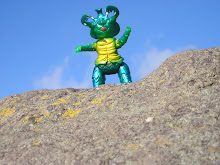Internet with Tim&Moby
The internet is actually a network of connected computers. It has 2 or more computers connected to communicate with each other. Nobody was sure when internet started because a lot of people were working on the same idea at the same time period. Most people thinks that what started it all was something called DARPA. That is a research group for the military of defense. In the late 1960s, scientists at DARPA created ARPANET, which allowed 4 California universities to share information with each other. In the 1970s, the ARPANET grew and grew and finally in the 1980s, became part of the internet we use today.
When you log on to the internet, you becomes part of the largest network on earth! Every computer on the internet is either a client, or server. A server is a computer that serves other computers like selling toys or having videos. Brainpop is a server. You are now using a server computer to see my blog. It makes a way for you to move to the serving computer. But, a client computer does not connect directly to a server. Client computers does not really know how to find a server, so it travels through the computers in between the client and server to relay requests.
When you try to go to a server, you have to first type in the URL on the address bar. URL stands for Uniform Resource Locator. Every web page on the internet has it's own URL. When you hit enter on your keyboard, you are telling your ISP that you want to see the server's homepage. ISP stands for Internet Service Provider. ISP is a server that allows you to get on to the internet. Most of them charges you a monthly fee for the service they provide. Then the ISP sends your request to it's DNS, or Domain Name Server. The DNS is like a phone book for computers. The DNS searches for the address name you provided. Once the name is found, The DNS will know the web page's IP address. IP stands for Internet Protocol, which is a serious of numbers that computers use to communicate with each other. In stead of regular address like street names and houses, the IP address look something like this:65.15620.543.It may look like total nonsense to us but it tells the computer exactly where to the web page. Once your request is found, the DNS sends the request to your ISP's backbone. It is a high speed line connected to all the computers. Your request bounce from one computer to another until it reaches the page you want to find. When the server page receives your request it sends the link back along a similar route. Finally, you are looking at the page you wanted.
All this happens in a matter of seconds!! Now it seems that the internet is pretty interesting, is it?
Subscribe to:
Post Comments (Atom)

No comments:
Post a Comment